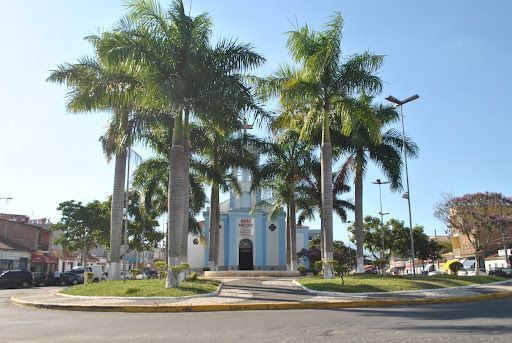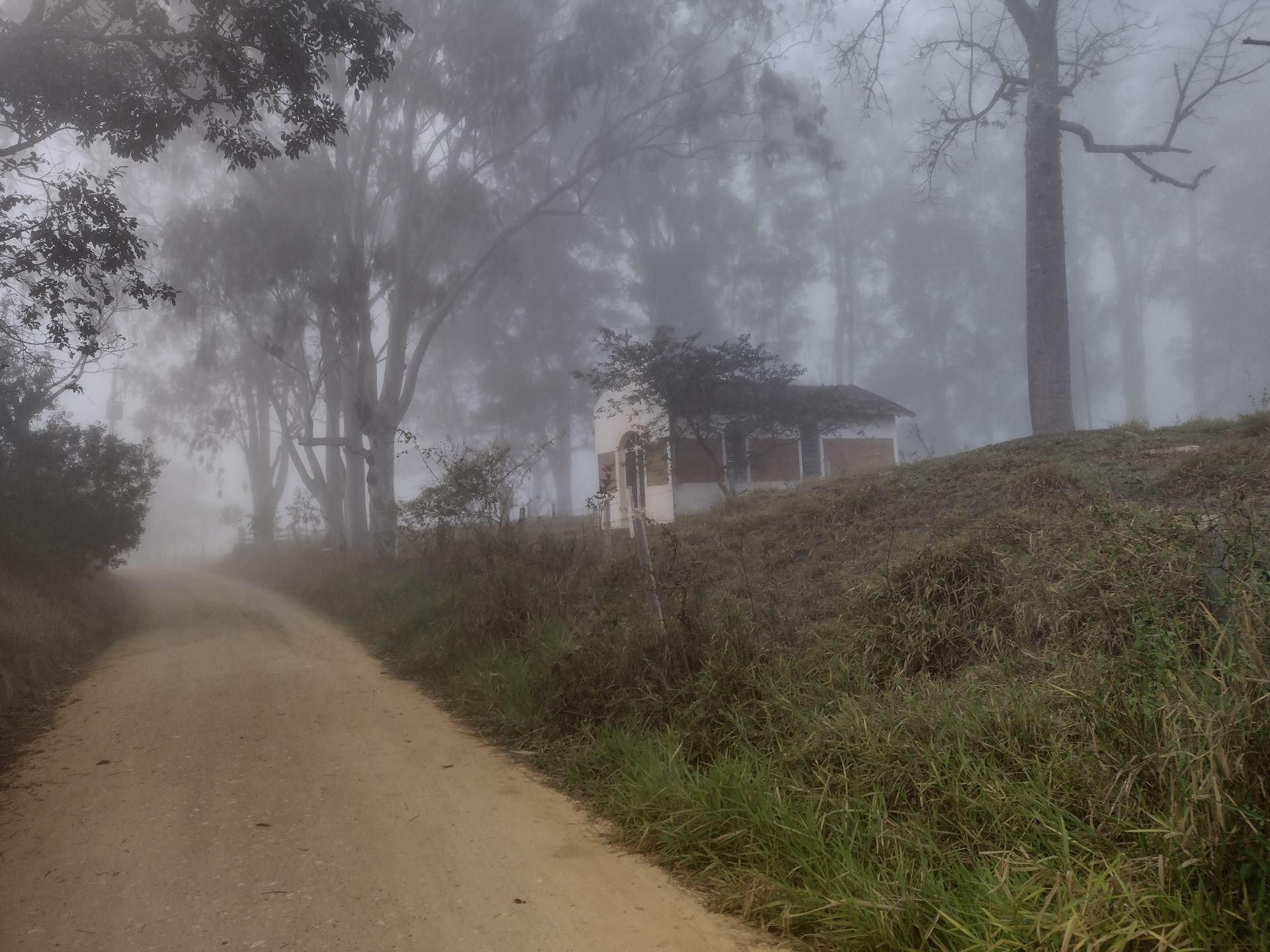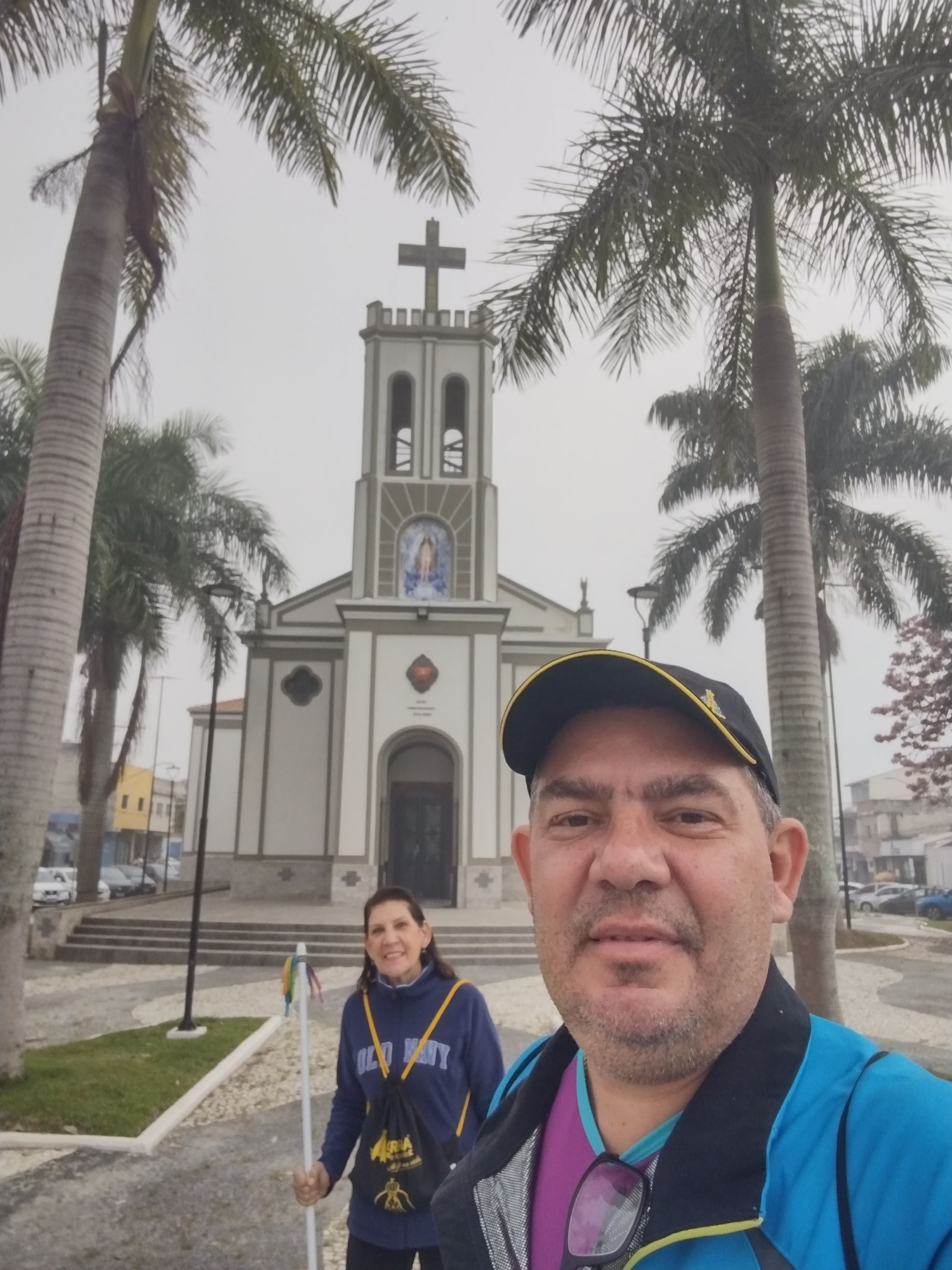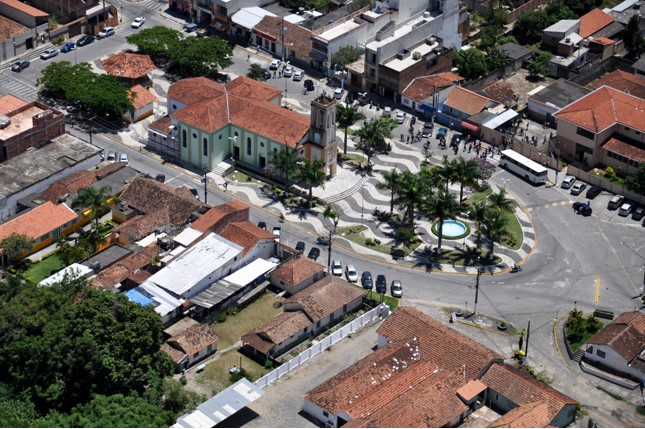Potim - SP
On this page, the Portal Peregrino da Esperança presents the city of Pindamonhangada, located in the interior of São Paulo, which stands out both for its historical importance and for its role in the economic, cultural and social development of the Paraíba Valley. The chosen Patron Saint was Our Lady of Good Success.
🕊️ “When all seems lost, it will be the happy beginning
of complete restoration.” (Our Lady of Good Success)
Features of the City of Potim - SP
The city of Potim, located in the interior of the state of São Paulo, is a municipality that, despite its young administration, has an identity deeply marked by faith, regional culture and proximity to the National Sanctuary of Our Lady of Aparecida. Emancipated at the end of the 20th century, Potim originated as an urban center that developed on the right bank of the Paraíba do Sul River, initially as a neighborhood of the municipality of Aparecida. Population growth and urban expansion led to its political autonomy, consolidating a municipality with its own characteristics, but which maintains historical, religious and emotional ties with its mother city. The name "Potim", of Tupi origin, carries meanings linked to nature and fertility, reflecting the ancestral relationship of the population with the land and the natural elements of the region.
The development of Potim is closely linked to the flow of pilgrims and pilgrimages that visit Aparecida, making it a city that lives and breathes the reflections of faith. Many of those who come to the region in search of spiritual renewal pass through Potim or stay there, giving the city a secondary but essential role in welcoming devotees. This context has strengthened the local economy, boosting trade and services focused on religious tourism, while also consolidating the city as a place of passage and support for pilgrims. In addition, Potim has sought to develop its urban and social structure, balancing tradition and modernity, with investments in education, health and basic infrastructure.
Daily life in Potim maintains the tranquility typical of small towns in the interior of São Paulo. Its streets, with simple houses and tree-lined squares, are marked by the coexistence of neighbors and a sense of community that is expressed both in religious celebrations and in social actions. Popular religiosity is a deep trait of the local culture, manifesting itself in processions, patronal festivals and moments of prayer that bring residents together around hope and devotion. Although it is very close to the largest Catholic pilgrimage center in Latin America, Potim preserves its uniqueness, building a trajectory that respects its origins while seeking its own affirmation.
Over the years, Potim has become more than just a neighboring city of Aparecida; it represents a place of support, growth and daily living of faith. Its role in the region is complementary, but significant, being part of the scenery that makes up the experience of the thousands of devotees who pass through there every year. Thus, Potim is gradually establishing its presence on the spiritual and urban map of the interior of São Paulo, as a city that welcomes, that walks alongside and that builds, with humility and perseverance, its own history.
The presence of the city of Potim on the Águas da Prata branch of the Caminho da Fé represents the last breath of the journey of many pilgrims before arriving at the National Sanctuary of Our Lady of Aparecida. Located just a few kilometers from the final destination, Potim is a transition point full of emotion, where the tiredness accumulated over hundreds of kilometers mixes with the expectation of arrival and gratitude for the crossing. There, the pilgrim realizes that he is about to complete something great, and the city's atmosphere becomes an extension of the spirituality that has moved him since the starting point. Potim, therefore, is not just a city of passage, but a symbolic space where the spiritual journey approaches its climax.
Upon entering Potim, the hiker finds a city with a welcoming spirit, marked by the simplicity of the interior of São Paulo and by a strong connection with the Catholic faith. Many residents recognize the value of the pilgrimage and contribute with gestures of solidarity, such as a glass of water, a word of encouragement or a place to rest. This hospitality reinforces the community sense of the Caminho da Fé, which is not just an individual journey, but also a collective construction of support and sharing. The urban environment of Potim, although modest, carries in every detail an atmosphere of expectation and reverence, as if the city itself understood the sacred role it plays in the pilgrim's journey.
The journey through Potim also has a profound spiritual meaning. It is the moment when the pilgrim confronts everything he has experienced up until that point: the physical challenges he has overcome, the pain he has faced, the unexpected encounters, the silent prayers and the purposes that have driven him. This final crossing before reaching Aparecida is experienced with emotional intensity, and Potim serves as a space for inner preparation, where many pray, reflect or simply take a deep breath before taking the final steps. The view of the Basilica hill in the background, which is already appearing on the horizon, is a sign that the destination is near, and this makes the stay in Potim charged with a special symbolism.
In this context, Potim plays a discreet but essential role on the Caminho da Fé. The city is the perfect ending to the Águas da Prata branch line, offering pilgrims a place of transition between the road and the sacred, between effort and reward, between the human and the divine. On its streets, pilgrims realize that their arrival is not just physical, but also spiritual, and that each step taken up to that point was worth it for the transformation it brings. Potim thus remains in the pilgrim’s memory as a place of silent welcome, which prepares the heart for the final encounter with Mother Aparecida.
The history of the main church in the city of Potim, in the interior of the state of São Paulo, closely follows the growth and consolidation of the religious identity of the local community. Even before its political and administrative emancipation, when Potim was still a neighborhood in the municipality of Aparecida, the Catholic faith already played a central role in the lives of its residents. It was in this context of popular devotion and strong ties to Christian tradition that the need arose for a temple that could serve as a spiritual reference, a space where the population could gather to celebrate the sacraments, pray and live their religious life in a community manner. The main church began as a simple building, built with the resources and efforts of the faithful themselves, driven by a spirit of collaboration and faith.
Dedicated to Saint Michael the Archangel, the city's patron saint, the Potim church quickly became the center of religious life in the neighborhood and, later, in the municipality. The choice of Saint Michael as the protector was not random, since the archangel is traditionally associated with the defense of the Christian people against evil and the spiritual protection of those who trust in him. The image of the celestial warrior, with sword and shield, represents the fight for justice and the victory of good, values that have always been present in the imagination of the local community. Since its origins, the church has not only hosted liturgical celebrations, but has also been the stage for popular festivals, novenas, fairs and moments of collective prayer that helped shape the sense of belonging of the residents of Potim.
With the city's independence in 1991, the main church officially became the religious center of the new municipality, reinforcing its role as guardian of local faith and culture. Its structure was expanded and improved over the years, with renovations that sought to preserve the symbolic and spiritual value of the temple, while adapting it to the needs of a growing population. Despite the physical changes, the main church maintained its essential function as a space for welcome, consolation and celebration, where spirituality is expressed in a lively and daily way. Sunday masses, baptisms, weddings, funerals and festivities are celebrated there, reinforcing the link between the sacred and the life of the community.
Today, the main church of São Miguel Arcanjo is not only a symbol of the Catholic faith in Potim, but also a landmark of its social and emotional history. Its walls and altar hold the memories of generations of believers who found comfort, hope and meaning there. The main church thus represents more than a religious building: it is the concrete expression of the identity of a people who found their strength and direction in faith, and who continue to walk together under the protection of the one they chose as their patron saint and intercessor.
Photographs of the City of Potim - SP








